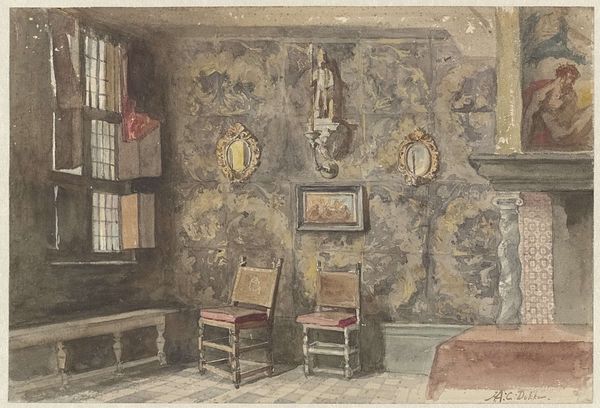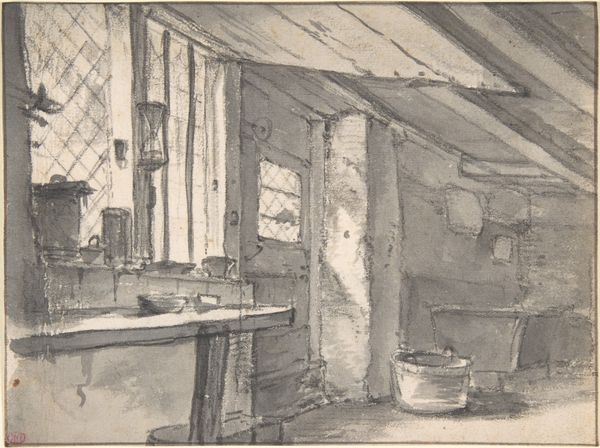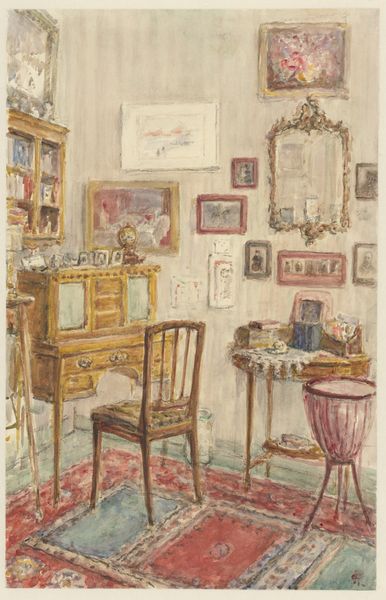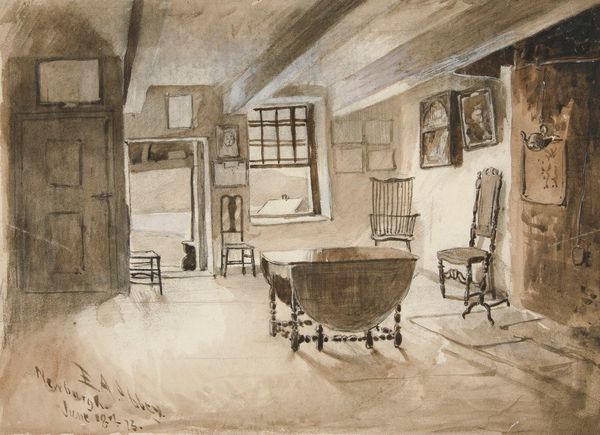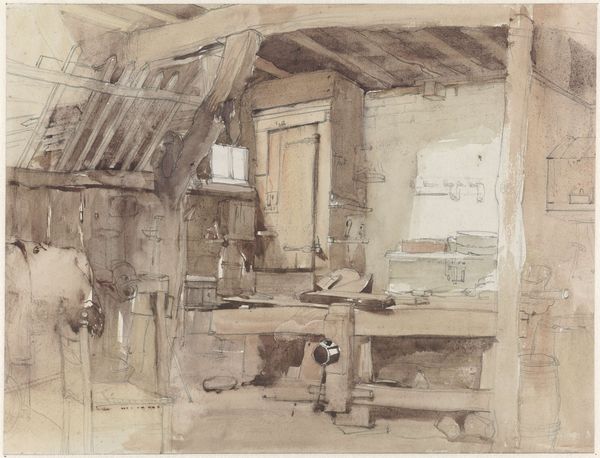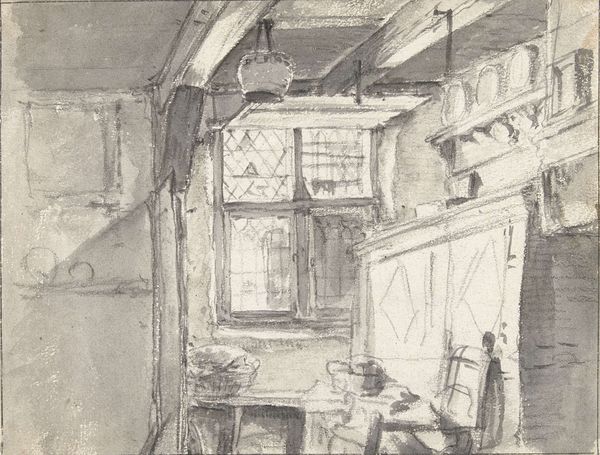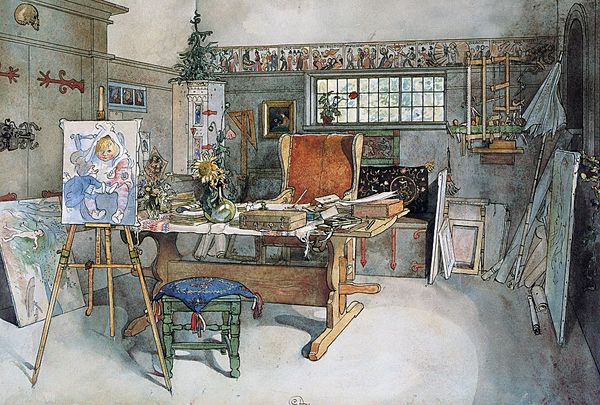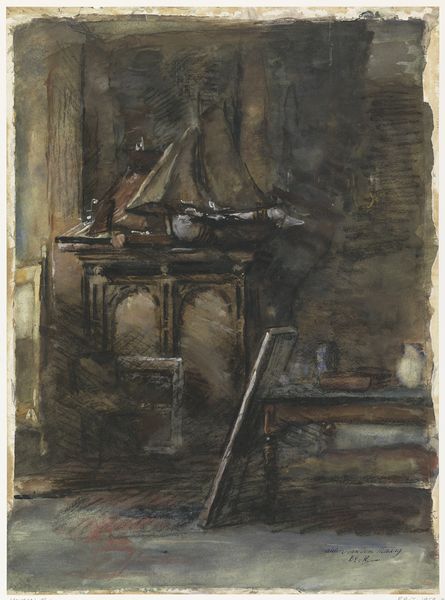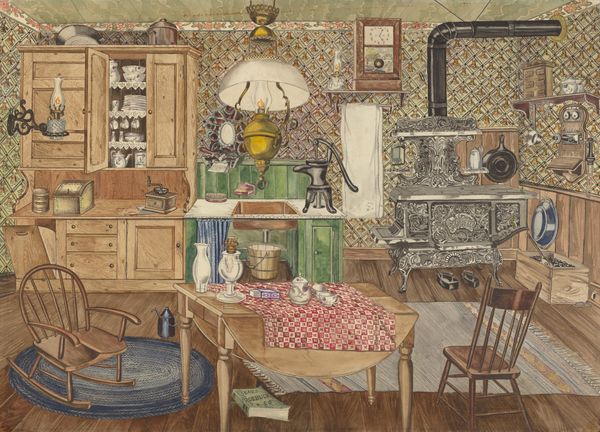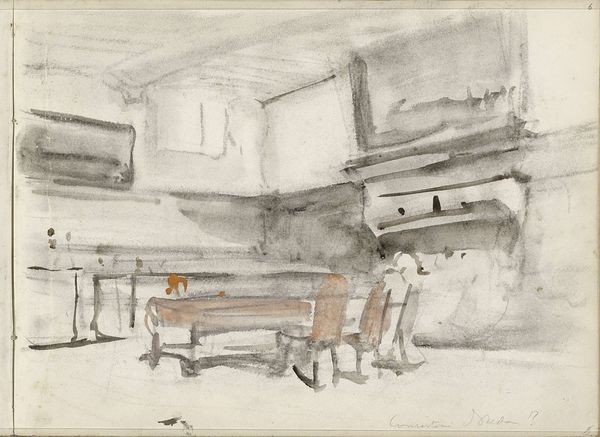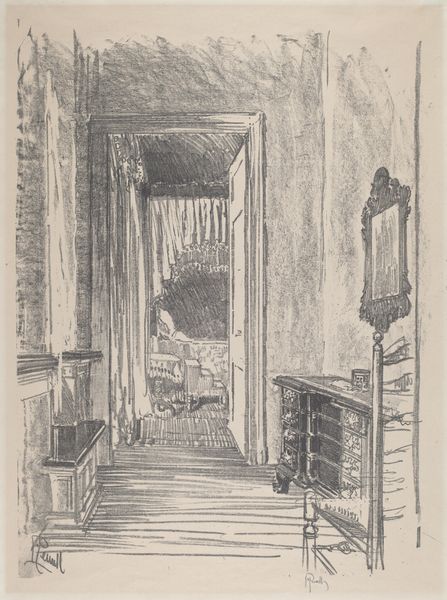
Copyright: Public domain
Editor: We’re looking at Beatrix Potter’s "The Tailor by the Heat," created around 1902. It seems to be a mixed media piece, combining watercolor and colored pencil. There’s something so cozy yet melancholic about this old man dozing by the fire. What pulls you into this picture? Curator: It's interesting you say that. To me, the genius here is in capturing quiet moments – that private world we all inhabit when we think nobody’s looking. There’s a stillness in the man's posture, isn't there? It hints at a weariness, perhaps from a long day of stitching. But there’s also something undeniably comforting in the warmth of the hearth. Potter was always brilliant at creating miniature worlds teeming with feeling. Do you see that too, or am I lost in my imagination again? Editor: I see the weariness, definitely. But the details, like the tea kettle and all the objects lined up on the mantle, give it a very lived-in feeling. I wouldn't have thought of her work this way. Curator: That domestic detail is pure Potter, I believe. Remember she came from a privileged background and was largely self-taught. The intense observation in her art comes, I suspect, from the constrained domestic setting and limited opportunities that shaped her life and career. What is the allure, would you say, of a tiny water-color in today's grand, modern world? Editor: Maybe it is her gift for observation; a sort of time capsule from another century. I learned today that beyond illustrating animals, Beatrix Potter found artistry in representing mundane scenes. Curator: Yes, there is joy in that. Finding the extraordinary in the ordinary. It is all a matter of how we look at the world and each other.
Comments
No comments
Be the first to comment and join the conversation on the ultimate creative platform.

